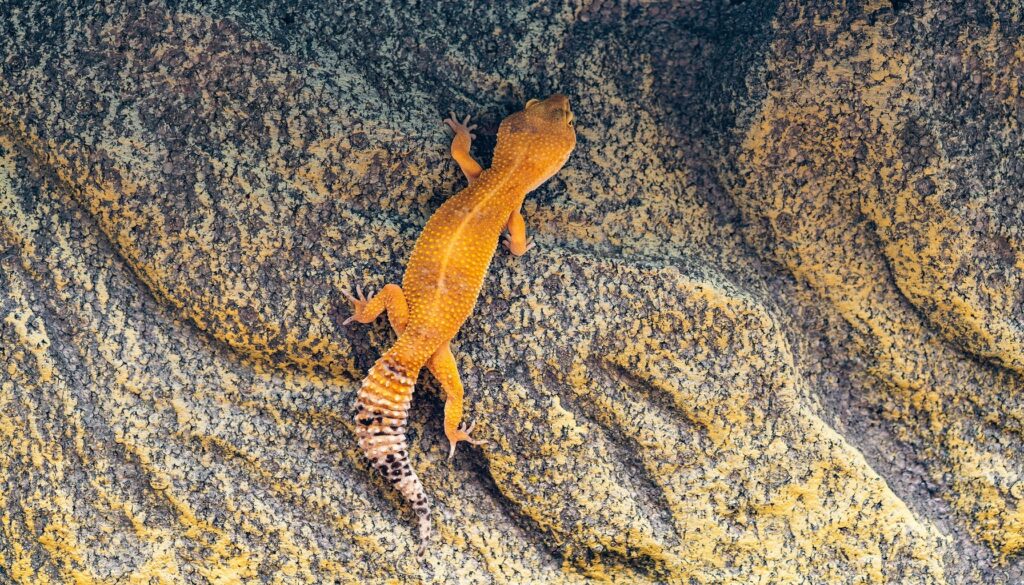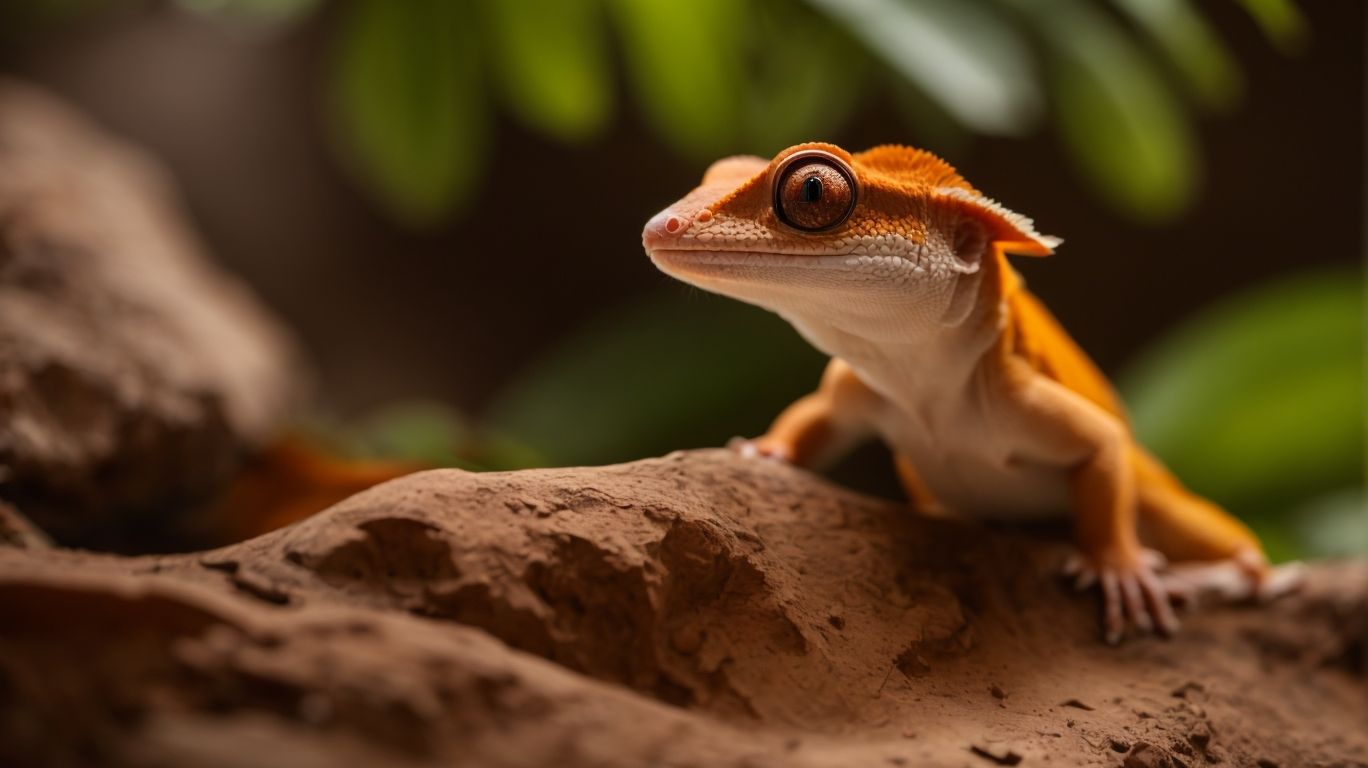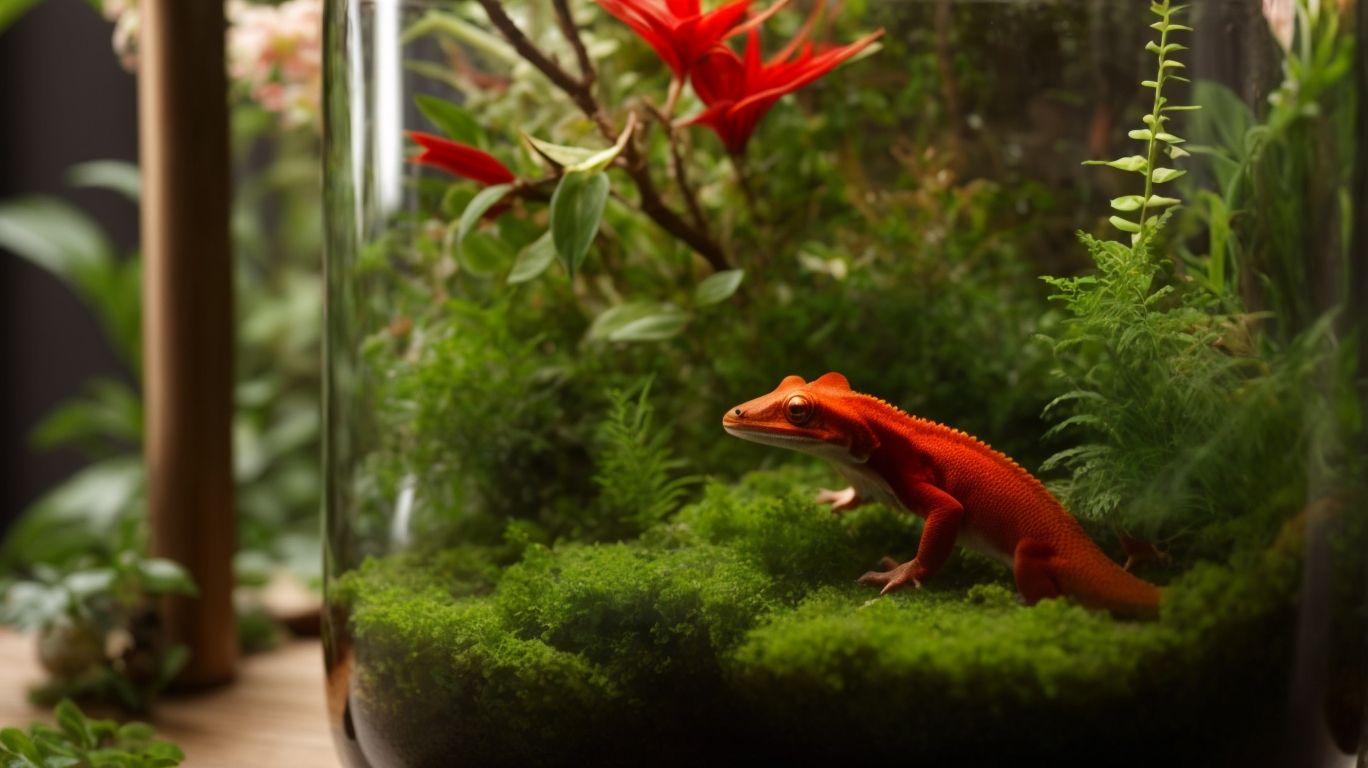
Tangerine Leopard Geckos: The Underrated Pet Choice
Table of Contents
The Uniqueness of Tangerine Leopard Geckos
What makes Tangerine Leopard Geckos stand out in the crowd? It’s their magnificent and vibrant orange hue, a result of meticulous selective breeding. This unusual coloration isn’t just for show; it’s a reflection of their unique genetic makeup that sets them apart from the common Leopard Gecko.
Their uniqueness isn’t limited to their coloration. It offers potential for a variety of color patterns and traits, especially in a breeding scenario. This opens up an exciting world of possibilities for enthusiasts looking to breed unique and eye-catching variants.
So, while they may be small in size, Tangerine Leopard Geckos pack a punch when it comes to making a big impression. Their vivid appearance and genetic diversity are just a few attributes that make them an exotic pet choice that’s anything but ordinary. As a bonus, their amiable nature and simple care needs make them an ideal choice for both beginners and experienced pet owners.
Whether you’re a pet lover looking for a one-of-a-kind companion or an enthusiast keen on exploring the captivating world of gecko breeding, Tangerine Leopard Geckos will certainly pique your interest. Unleash your adventurous spirit, and discover the unique world of these underrated pets.
The Temperament of Tangerine Leopard Gecko
Just as their name suggests, Tangerine Leopard Geckos radiate warmth, and this extends to their character too. They are among the most docile and amiable reptiles you can own, showcasing a remarkable temperament that can surprise even the most seasoned pet enthusiasts. This is a standout feature that adds to their appeal and distinguishes them from many other reptilian species.
These reptiles tend to be quite shy at first, but they gradually open up with time, showing a calmer side that can be delightfully rewarding for owners. As they grow comfortable in their new environment and with their human companions, they reveal their gentle nature and can form a strong bond with their keepers.
Unlike some reptile species, Tangerine Leopard Geckos don’t display aggressive behavior towards humans. They’re generally peaceful creatures that aren’t quick to bite or scratch, making them suitable even for households with children. However, it’s always a good practice to supervise interactions between young kids and any pet.
Another fascinating aspect of their temperament is their curious nature. These creatures love to explore their surroundings, which can be quite entertaining to observe. Providing an enriched environment with plenty of hiding spots and climbing opportunities can help satisfy their exploratory instincts.
While they may be nocturnal by nature, they are relatively active during their awake hours, displaying playful antics that can keep you entertained. Tangerine Leopard Geckos’ charming temperament combined with their distinctive aesthetics makes them a unique pet that’s hard to resist.
Remember, the relationship you form with your gecko can be as warm and enriching as their vibrant tangerine hues, as long as it’s nurtured with care, patience, and respect for their nature.
The Diet of a Tangerine Leopard Gecko
Feeding your Tangerine Leopard Gecko can be a simple and straightforward task, thanks to their insectivorous dietary preference. These brightly-colored geckos love to munch on a variety of small insects, including mealworms, crickets, and other soft-bodied invertebrates. This uncomplicated diet plan provides a refreshing break from the complex feeding requirements of many other pets, and it can make mealtime an enjoyable experience for both you and your gecko.
It’s important to note, however, that although their dietary needs may be simple, it doesn’t mean you can slack off when it comes to providing a balanced diet. Just as we humans require a variety of nutrients to stay healthy, your Tangerine Leopard Gecko also needs a diverse range of nutritional components. Regularly incorporating different types of insects into their meals not only offers the gecko a variety in taste but also ensures they receive all the necessary nutrients.
One interesting aspect of feeding these geckos is that they’re excellent hunters, and watching them hunt their prey can be quite a spectacle. Keep in mind that live food is typically preferred over dead, as the movement of the insects stimulates their hunting instincts.
Finally, remember that the dietary needs of Tangerine Leopard Geckos can change as they age, with baby and juvenile geckos requiring daily feedings, while adult geckos typically eat every other day.
In essence, feeding your Tangerine Leopard Gecko can be as simple as providing a variety of insects for them to feast on. But like any pet, they thrive on a balanced diet, so ensuring nutritional diversity is key to their health and happiness.
Housing Your Tangerine Leopard Gecko
Creating a comfortable home for your Tangerine Leopard Gecko doesn’t necessitate a large area or complex setup. In fact, it’s quite the contrary. Their needs can be easily met in a well-ventilated terrarium with enough space for them to move around freely. The size of the terrarium will depend on the gecko’s size and age, but generally, a 20-gallon tank is considered suitable for one adult.
Comfort, of course, isn’t just about space. It’s also about creating an environment that mirrors their natural habitat. Tangerine Leopard Geckos originate from desert-like regions, and your gecko’s enclosure should reflect this. A heat source is crucial, as these reptiles bask in warm environments. However, remember to create a temperature gradient, allowing your gecko to cool down when needed. The optimum temperature within their enclosure should range from 75 to 90 degrees Fahrenheit, ensuring a warm basking spot at the higher end of this range. Humidity also plays a crucial role in your gecko’s health. While they thrive in relatively low humidity, a slightly more humid hide can assist in their shedding process.
Lighting isn’t a major concern for these nocturnal creatures, but a natural light-dark cycle can help maintain their biological rhythm. A daylight cycle of 12 hours with regular room light suffices for their needs.
Opt for easy-to-clean substrates like newspaper or reptile carpet. Your gecko’s terrarium should also have ample hiding spots where your pet can retreat and feel safe. These hiding areas can be created using rocks, plants, or commercial reptile hides.
Remember, their enclosure is their home, and just as we like to keep our homes clean and clutter-free, the same goes for your gecko’s terrarium. Regular cleaning and maintenance not only make their enclosure visually appealing but also ensure the health and longevity of your pet.
With thoughtful planning and regular upkeep, housing your Tangerine Leopard Gecko can be a fulfilling task that contributes to your pet’s overall well-being and happiness. Dive into the joy of creating a cozy and inviting space for your radiant gecko, and watch them thrive in the comfort of their new home.
Handling Your Tangerine Leopard Gecko
One of the most rewarding aspects of having a Tangerine Leopard Gecko as a pet is the ability to handle them. They are known for their docile nature and over time, with gentle and regular interaction, they can grow comfortable with human touch. But how do you start this bonding journey?
Begin by allowing your gecko time to get used to their new home before initiating physical contact. This adjustment period can vary in length, but patience is key. Once they seem settled, slowly introduce your hand into their space. Do this without abrupt movements, to avoid startling them. Start with a soft touch on their body before attempting to pick them up.
When it comes to lifting them, it’s critical to be gentle and supportive. Always lift them from the bottom, supporting their belly and legs. Never grab or hold them by their tail, as they can easily drop it as a defense mechanism. Though they can regenerate their tail over time but it may not look exactly the same as the original. Limit handling sessions to a few minutes initially, gradually increasing over time as your gecko becomes more comfortable with you.
Remember that handling should always be on their terms. If they seem stressed or try to escape, it’s best to give them some space and try again later. Additionally, always ensure your hands are clean before and after handling to prevent the spread of bacteria.
Handling your Tangerine Leopard Gecko can strengthen the bond you share, transforming your relationship into a rewarding companionship. These geckos have a lot to offer, and with careful and considerate handling, they can grow to trust and enjoy your interactions. So, embark on this exciting journey of bonding with your vibrant gecko, and experience the joys of pet ownership in a whole new light.
Health Considerations for Tangerine Leopard Geckos
factors that new owners should keep in mind. Being vigilant about their health can ensure that these vibrant pets lead a happy and active life.
One common health concern for Tangerine Leopard Geckos is Metabolic Bone Disease (MBD), which can result from an improper diet. It’s important to remember that these geckos need a diverse range of nutrients, as discussed in the section on their diet. Keeping up with this and ensuring they have a calcium supplement can help prevent MBD.
Another potential health issue is dehydration. Remember, even though these creatures are from arid regions, they still require access to fresh water. A small, shallow dish of water should always be present in their enclosure to prevent dehydration.
It’s also essential to monitor their shedding process. Leopard Geckos, including the Tangerine variant, shed their skin regularly. A healthy shed is a good sign, but if your gecko is having trouble, it could indicate a problem. Struggling with shed can lead to skin infections or problems with their toes and eyes.
Regularly observing your gecko’s behavior is also beneficial in picking up early signs of illness. Changes in appetite, lethargy, or changes in their stool could indicate that your pet is not feeling well.
Lastly, just like any other pet, routine veterinary check-ups are crucial for Tangerine Leopard Geckos. A specialist reptile vet can carry out regular health checks and provide necessary vaccinations. They can also provide expert advice tailored to your gecko’s needs.
Ultimately, keeping your gecko healthy involves regular observation, a balanced diet, and proper hydration. Being proactive about these aspects can ensure that your Tangerine Leopard Gecko stays a vibrant and lively addition to your home.
The Joy of Owning a Tangerine Leopard Gecko
Stepping into the delightful world of Tangerine Leopard Geckos brings immeasurable joy. These radiant little creatures, with their warm, orange glow and gentle disposition, brighten up your life in ways you never expected.
Engaging with your gecko’s captivating nocturnal habits adds a delightful twist to conventional pet ownership. Their vibrant orange hues are a source of constant fascination, while their docile temperament brings warmth to your interactions, forging an unbreakable bond between you and your pet.
From the simplicity of their dietary needs to the ease of creating a comfortable habitat, owning a Tangerine Leopard Gecko eliminates much of the usual stress associated with keeping exotic pets.
Witnessing their curious exploration of their surroundings brings smiles, while their playful antics offer endless entertainment. You’ll find yourself eagerly awaiting their active hours, cherishing every moment spent watching them enjoy their enclosure, or gently holding them in your hands.
Being a Tangerine Leopard Gecko owner isn’t just about the joy they bring to your life; it’s also about the satisfaction of knowing you’re giving these unique creatures a loving home. You’re fostering an environment where they can thrive and enjoy life to the fullest, just as they add that same fullness to yours.
As you journey through the nuances of Tangerine Leopard Gecko ownership, you’ll discover that it’s more than just having a pet; it’s about forming a lasting companionship with a creature that’s as extraordinary as the relationship it offers. So, take the plunge, embrace the tangerine glow, and get ready for a rewarding experience like no other.
Related Posts

Incubating Crested Gecko Eggs: Essential Techniques and Tips
Crested geckos are fascinating reptiles that are known for their…

Red Crested Gecko Health: Common Issues and Preventive Care
Are you a proud owner of a red crested gecko?…

Creating the Ideal Environment for Your Red Crested Gecko
Do you own a red crested gecko or are you…

No Comments